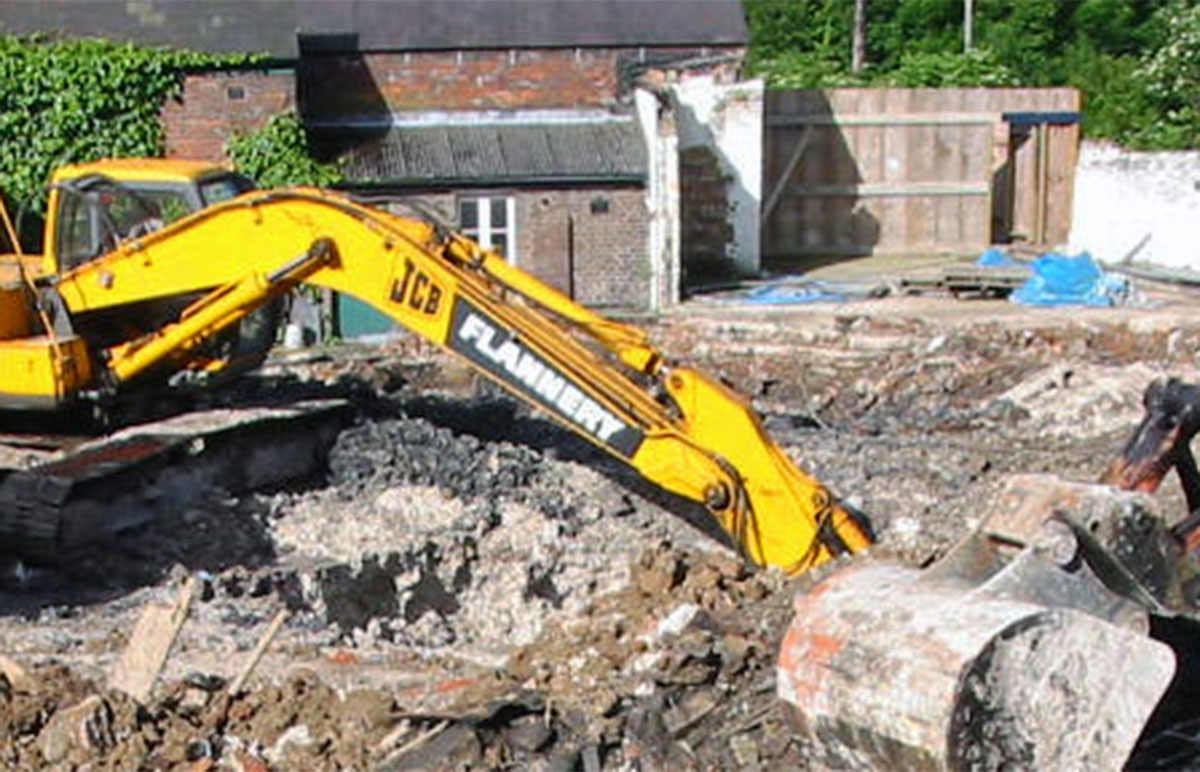
It was with great interest that I read an article on Basement Impact Assessments (BIAs) in a recent issue of Ground Engineering magazine, with particular reference to BIAs carried out in London Borough of Camden (strictly, the term “BIA” really only applies in Camden, with other boroughs having their own terminology, but it is becoming a generic term for this type of assessment wherever it is carried out). I have been involved in many of this type of assessment – either working for the developer, or reviewing applications by others – and was very interested to read the experiences of another firm that has also been involved in what is a relatively new area for all of us. I do however have a slightly different view of the process and the validity of the type of rigorous assessment that is often required.
Firstly, I am not sure that a Basement Impact Assessment (BIA) is required for all basements in Camden. Camden’s Development Policy No 27 (DP27) makes a distinction between “larger” and “smaller” schemes, where a lower level of assessment is required for the latter type, which are basements that are less than a storey deep and do not extend beyond an existing building’s footprint; CPG4 does not however make this distinction, so this is rather a grey area, but something worth bearing in mind. It is also worth clarifying that whilst the ground stability element of a BIA is to be carried out by a chartered civil engineer or a geotechnical specialist (SISG), the geotechnical specialist also needs to be MICE, so in most cases will be CEng in any case. In addition, the hydrogeological assessment is to be carried out by a hydrogeologist who is also a chartered geologist, which I interpret as meaning someone that was assessed for chartership as a hydrogeologist, although this is not explicit. There have been many applications that have been rejected before our involvement, simply because the technical work was not completed by engineers with the appropriate qualifications.
The BIA requirements are certainly resulting in a level of ground investigation that might not otherwise be carried out, but as financial constraints over the years have tended to reduce the amount of investigation on any given site, I am in favour of something that pushes clients to carry out proper ground investigations. There is still a wide variation in the quality of the BIAs that are being assessed by the council, but my experience is that the council is often seeking technical advice to review the BIA submissions and local residents, either individually or through the various residents’ associations in the area, are often employing their own technical experts to assist in raising objections to planning applications. This level of review is leading to a need for a degree of technical detail and rigour that might not otherwise be the case, and, over the period that these assessments have been required, has resulted in a raising of standards. It is however the case that the level of technical scrutiny is probably quite closely related to the level of local objection to a proposed scheme.
It has been suggested that there could be different levels of BIA depending on the scale of the development, but as a poorly conceived single storey basement can be far more disruptive than a well-designed two-storey basement it is difficult to envisage on what criteria the different levels of BIA would be based. However, I have been surprised that the councils are not more willing to provide conditional planning consents – in much the same way that conditional consent is often granted on contaminated sites where investigations and / or remediation is not completed – this might, for example, allow other aspects of the planning process, such as appearance and mass of a proposed building, right to light and access issues and so on, to be resolved before an expensive BIA needs to be carried out. Alternatively a preliminary investigation and BIA could be carried out, either using limited ground investigation data, or information from nearby sites, which could then form the basis for an initial assessment of BIA issues, with planning permission granted with conditions applied requiring resolution of the outstanding matters, which would usually require more detailed ground investigation, design and monitoring. It is questionable whether or not the type of retaining wall design and complex ground movement analyses that we are routinely carrying out as part of a BIA are actually required at the pre-planning stage.
Overall however, I feel that the BIA process is something that should be applauded by the geotechnical industry, as it is a serious and well thought out attempt by a regulator to raise standards in ground investigation and to require higher standards of analysis. Importantly it has placed responsibility for ground movement analysis and consideration of other geotechnical aspects firmly with the geotechnical consultant / specialist, where it rightly belongs. Yes, there are concerns around the level of scrutiny of BIAs at times, but if most BIAs have resulted in better investigations and better analysis being carried out most of the time, I feel as an industry we should be supporting the process and viewing it as an opportunity to promote our expertise.
Steve Branch
Managing Director
Geotechnical and Environmental Associates
Related News
July 20, 2013
by Steve Branch
It was with great interest that I read an article on Basement Impact Assessments (BIAs) in a recent issue of Ground Engineering magazine, with particular reference to BIAs carried out in London Borough of Camden.